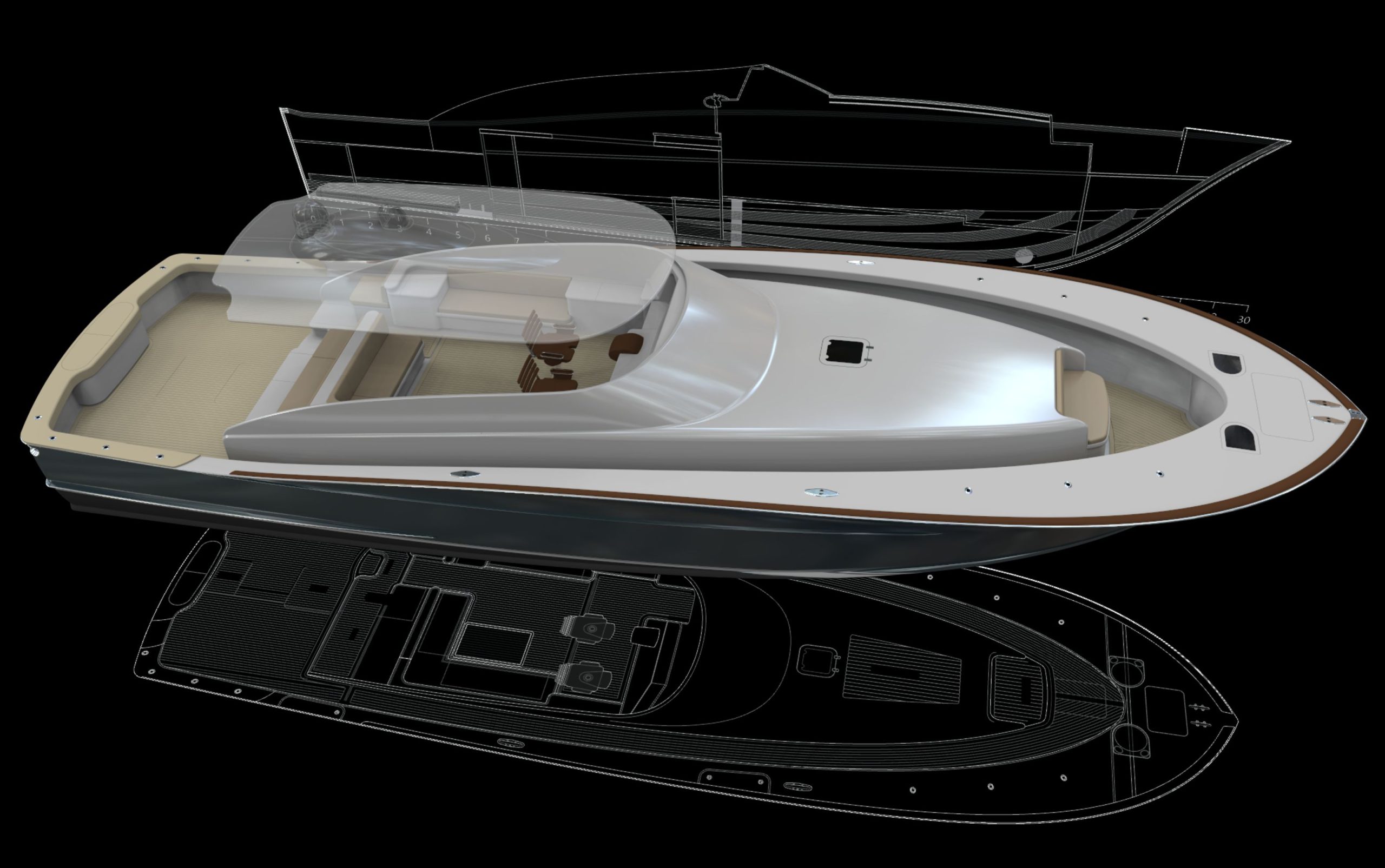
In 2011, a request for a 90′ sportfisherman yacht was presented to us from the Singularis sportfishing team. We pushed our previous limits and were able to successfully design, build, and deliver the longest sportfisherman our company has built to date. When the same owner came back with requests that ultimately led to the idea of an inboard power 60′ walkaround, we accepted the challenge of tackling another first for the company. We had the opportunity to sit down with John Bayliss and Pete Buescher, who is the design manager, to learn more about the design components of this build.
How did the project begin?
John: The owner approached us to develop an express boat; something in the 45′-50′ range. The new build would replace an existing 43′ outboard center console that he and his crew currently use, primarily to fish for sailfish in South Florida and the Bahamas. They were interested in a slightly larger and more effective platform for tournament fishing.
Sounds innocent enough. What were the factors that led to inboard power?
J: The decision for inboard diesel power was ultimately the result of staying committed to the boat’s intended purpose: uncompromised fishability. In the South Florida tournament environment, some of the best days for fishing are in the roughest conditions. Not only that, but outboard engines get in the way of fishing when your goal is to fish from anywhere on the boat. From that perspective, inboards were the only way to go.
Pete: The power and power density available in modern outboards is quite impressive, and the convenience offered by their installation, ownership, and replacement is considerable. However, there’s also a very clear drawback: outboard engines get in the way of fishing. Staying faithful to the development of the ultimate fishing platform made choosing inboards an easy decision.
So now the project is an upper 50’ inboard walkaround ultimate fishing machine. What drove the design to 60’?
P: By the time we began entertaining the idea of inboard power, we had already gotten started, at least through early discussions and very preliminary sketches, on the design of a smaller 50′ outboard-powered vessel. As a result, there were already some expectations for what the boat would need in way of amenities and accommodations. The jump to inboard power immediately stretched the boat considerably. At that point, it turned into an exercise to see how small we could reasonably keep the boat while also including an engine room. Further, knowing that we want the boat to be as fast as it can be, we had to consider 12-cylinder engines. Going to 60′ of length allowed us to introduce a little more beam and a little more height, and with that everything fell into place.
Obviously, there are differences between an open walkaround design and a traditional flybridge boat. What design challenges did you run across?
J: As our boats have evolved over our 20-year history, we’ve paid close attention to what works well and what doesn’t and have developed a ‘formula’ for designing a flybridge convertible sportfishing yacht. While every one of our boats has been different, there are certain elements that still make them a Bayliss. A lot of those features simply don’t exist on this boat, and there were many new features to figure out.
P: One of the biggest challenges for us was the reduced height outboard in the engine room on account of the walkaround deck. On the convertibles, we have enough height, even in the outboard regions of the engine room, to walk around the engines and mount equipment on the hull sides. This is not the case with this walkaround. We’ve had to reconsider how several of our systems are located and routed, paying attention not only to the fit of a given component in a space, but also to consider access for routine maintenance and repair, and create paths for eventual removal and replacement of components.
J: The other most obvious challenge, compared to a convertible, was the reduced interior volume. The captain and owner were great about not being overly ambitious with interior requirements, but of course, neither the owner nor our team ever want to leave anything on the table. The unique shape of the interior gave us some new things to contend with as we tried to fit as many features as we could into the space without making the area below deck too cramped, forfeiting function or comfort.
What design criteria did you stick with to keep this boat a “Bayliss”, even though she is a different build-style?
J: The boat has to perform well and look good. Period. So, the parameters that we aim for to ensure that a hull runs well and looks good couldn’t be exceeded or compromised.
P: Certain dimensional requirements of this boat, such as the beam requirement for a walkaround, drove the proportions of the boat slightly outside of the lane we typically stay in for a convertible. Regardless, there were criteria that couldn’t be compromised. The transom shape, transom corners, sheer, and transition to flare all had to stay the same. The elements that determine how well the boat moves through the water are all within our design parameters, and the aesthetics of the proportions definitely make her a Bayliss.
J: We’re very fortunate in this organization to have established relationships with so many wonderful and experienced owners, captains, and crew, and the diversity of their fishing experience is remarkable. We were able to solicit input from several of our BBW family members who are familiar with the kind of fishing that this boat is intended for, and their input was invaluable. You can’t build a boat like this by yourself. We know our best results come from a collaborative effort.
You can find this article and more in the 2022 edition of our printed newsletter.
